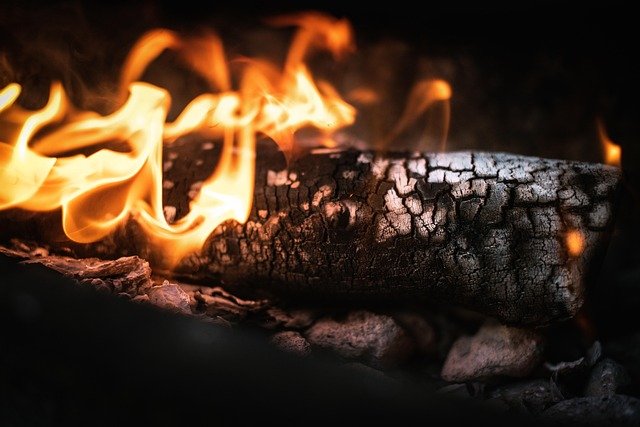Wood Stoves: An Overview of Heating Options and Considerations
Wood stoves have been a reliable source of home heating for centuries, offering a combination of efficiency, aesthetics, and a connection to traditional heating methods. This article explores the various aspects of wood stoves, from their types and features to safety considerations and environmental impact.

What are wood stoves and how do they contribute to home heating?
Wood stoves are enclosed heating appliances designed to burn wood fuel efficiently and provide warmth to indoor spaces. They operate by combusting wood within a firebox, radiating heat into the surrounding area. Wood stoves can serve as primary heating sources or supplement existing heating systems, particularly in colder climates or rural areas where other fuel options may be limited or expensive.
These appliances have evolved significantly over time, with modern wood stoves offering improved efficiency, reduced emissions, and enhanced safety features compared to their predecessors. Many homeowners appreciate wood stoves for their ability to provide heat during power outages and the ambiance they create in living spaces.
What types of wood stoves are available and what features do they offer?
Wood stoves come in several varieties, each with unique characteristics suited to different heating needs and preferences:
-
Catalytic wood stoves: These stoves use a catalytic combustor to burn gases and particles that would otherwise escape up the chimney, resulting in higher efficiency and lower emissions.
-
Non-catalytic wood stoves: These stoves rely on firebox insulation and air introduction to create a high-temperature environment for complete combustion.
-
Hybrid wood stoves: Combining features of both catalytic and non-catalytic designs, hybrid stoves aim to maximize efficiency and minimize emissions.
-
Pellet stoves: While not traditional wood stoves, these appliances burn compressed wood pellets and offer automated fuel feeding and temperature control.
Features that may vary among wood stove models include:
-
Heat output capacity (BTU ratings)
-
Firebox size and fuel loading options
-
Airwash systems for cleaner glass viewing
-
Blower fans for improved heat distribution
-
Ash management systems
-
Decorative finishes and styles
What safety tips and best practices should be followed when operating wood stoves?
Proper operation and maintenance of wood stoves are crucial for safety and efficiency:
-
Install and maintain smoke and carbon monoxide detectors in your home.
-
Ensure proper clearance between the stove and combustible materials, following manufacturer guidelines and local building codes.
-
Use a properly sized and installed chimney or flue system, and have it professionally inspected and cleaned annually.
-
Burn only dry, seasoned wood to reduce creosote buildup and improve efficiency.
-
Never use flammable liquids to start or accelerate fires in wood stoves.
-
Dispose of ashes safely in a metal container away from combustible materials.
-
Keep children and pets away from hot stove surfaces.
-
Have a fire extinguisher readily available and know how to use it.
-
Follow the manufacturer’s instructions for operation and maintenance.
How should one choose the right size and placement for a wood stove?
Selecting the appropriate wood stove size and location is essential for optimal heating and safety:
-
Calculate the heating area: Consider the square footage of the space you want to heat, factoring in ceiling height and insulation quality.
-
Determine BTU requirements: Match the stove’s heat output to your heating needs, typically ranging from 20,000 to 80,000 BTUs for residential use.
-
Consider room layout: Place the stove in a central location for even heat distribution, away from windows and doors to minimize heat loss.
-
Ensure proper clearances: Follow manufacturer and local code requirements for minimum distances from walls, furniture, and other combustible materials.
-
Plan for chimney installation: Consider the most efficient and safe route for the chimney or flue system, which may impact stove placement.
-
Account for fuel storage: Ensure adequate space for wood storage near the stove for convenience.
-
Consult professionals: Work with a certified stove dealer or installer to ensure proper sizing and placement for your specific needs.
What is the environmental impact of wood stoves and how can sustainable practices be implemented?
Wood stoves have both positive and negative environmental impacts, which can be managed through responsible use:
Positive aspects:
-
Wood is a renewable resource when harvested sustainably.
-
Modern wood stoves can be highly efficient, reducing overall fuel consumption.
-
Wood burning can be carbon-neutral if trees are replanted to offset emissions.
Negative aspects:
-
Particulate matter and other emissions can contribute to air pollution.
-
Improper wood harvesting can lead to deforestation and habitat loss.
Sustainable wood-burning practices include:
-
Use EPA-certified wood stoves that meet current emission standards.
-
Burn only dry, seasoned wood to reduce smoke and improve efficiency.
-
Practice proper fire-starting techniques to minimize smoke during startup.
-
Maintain your stove and chimney regularly for optimal performance.
-
Source wood from sustainably managed forests or use waste wood when possible.
-
Consider supplementing wood heat with other renewable energy sources.
-
Educate yourself on local air quality regulations and burning restrictions.
By following these guidelines and choosing modern, efficient wood stoves, homeowners can enjoy the benefits of wood heating while minimizing environmental impact.




